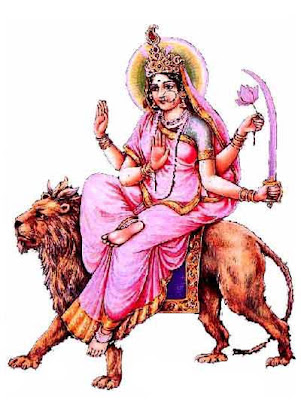Prathama Tithi Begins at 16:54:54 on April 7, 2016
Prathama Tithi Ends at 13:07:01 on April 8, 2016
Gudi Padwa is the Marathi festival, which is celebrated because Hindu New Year (known as “Samvatsara” in Sanskrit) begins from this day. As per the Panchang, Nav Samvatsar begins from the Pratipada of Shukla Paksha (bright fortnight) of Chaitra month.
Gudipadwa Muhurat
1. The Samvatsara begins on the day when Pratipada (first day of a fortnight; also known as “Padva”) is prevailing during the sunrise.
2. If Pratipada is prevailing on the sunrises of 2 days, the first day is considered for the celebration.
3. If Pratipada is not prevailing during the sunrise of any day, Nav Varsh will be celebrated on the day when Pratipada is beginning and ending.
In case of Adhik Maas (extra month added after every 32 months, 16 days, and 8 Ghatis), below given rules will be followed:
If it is Chaitra Adhik Maas (the extra month), Nav Samvatsara will begin from its Pratipada only. It is because Adhik Maas is the part of its original month only. Hence, along with the original Chaitra month, Adhika Chaitra is also considered the part of the New Year.
When To Perform Gudi Padwa Rituals
Below given things can only be performed during the original Chaitra month:
• Nav Varsh Phal Shravan (listening to the New Year’s horoscope)
• Taila Abhyang (oil bath)
• Nimba Patra Prashan (eating Neem leaves)
• Dhwajaropan (flag hoisting)
• Navratrarambh (beginning of Chaitra Navratri)
• Ghatsthapana (establishing Kalash/holy stoup for Navratri Puja)
But, Nava Varsha Naamgrahan (naming ceremony of the New Year) during Sankalp must be done in Adhik Chaitra Shukla Pratipada only. The name of this Samvatsara is Saumya 2073. It is also the Shri Shalivahan Shak 1938 and the name of this Samvat is Durmukhi.
King of Nav Samvatsara (Varshesh)
Lord (astrological planet) of the first day of the New Year is considered as the Lord of the year. In 2016, the Hindu Nav Varsh day is Friday. Hence, lord of the Hindu New Year 2016 is venus.
Guddi Padwa Mantras
These Mantras can be chanted as per the relevance of your worship procedures. Some people keep fast on the day. Mantras for them as well are given below:
Morning Vrat Sankalp:
ॐ विष्णुः विष्णुः विष्णुः, अद्य ब्रह्मणो वयसः परार्धे श्रीश्वेतवाराहकल्पे जम्बूद्वीपे भारतवर्षे अमुकनामसंवत्सरे चैत्रशुक्ल प्रतिपदि अमुकवासरे अमुकगोत्रः अमुकनामाऽहं प्रारभमाणस्य नववर्षस्यास्य प्रथमदिवसे विश्वसृजः श्रीब्रह्मणः प्रसादाय व्रतं करिष्ये।
Shodashopachar Puja Sankalp:
ॐ विष्णुः विष्णुः विष्णुः, अद्य ब्रह्मणो वयसः परार्धे श्रीश्वेतवाराहकल्पे जम्बूद्वीपे भारतवर्षे अमुकनामसंवत्सरे चैत्रशुक्ल प्रतिपदि अमुकवासरे अमुकगोत्रः अमुकनामाऽहं प्रारभमाणस्य नववर्षस्यास्य प्रथमदिवसे विश्वसृजो भगवतः श्रीब्रह्मणः षोडशोपचारैः पूजनं करिष्ये।
After Puja, the fasting person must chant this Mantra:
ॐ चतुर्भिर्वदनैः वेदान् चतुरो भावयन् शुभान्।
About Gudhi Padwa
Gudipadva has several names as per the different regions in India.
1. Samvatsar Padvo is celebrated among Konkanis of Goa and Kerala.
2. Rest of the Konkani diaspora in Karnataka know it as Yugadi.
3. People from Andhra Pradesh and Telangana celebrate Ugadi.
4. Kashmiris celebrate it as Navreh.
5. Sajibu Nongma Pānba or Meetei Cheiraoba is celebrated in Manipur.
6. Chaitra Navratri begins from this day for North Indians.
On this day, Marathis hoist the Gudi. That is why this festival is known as Gudi Padava. Gudi is made on a bamboo stick by placing an inverted Kalash of silver, copper, or bronze over it and adorning the bamboo with a beautiful cloth (usually, it is of saffron color and made of silk with brocaded borders). The Gudi is then adorned with Gaathi (sugar crystals garland), Neem leaves, a mango twig, and red-flower garland.
The Gudi is hoisted at a higher place like terrace in home so that it is quite visible to everyone. Many people also stick it on their windows or the right side of their doors.
Significance Of The Gudi
People hoisted Gudi in history when their King Shalivahana defeated Sakas and came back to Paithan, as it is considered as the symbol of victory.
2. Some people also hoist Gudi to commemorate the victories of Chhatrapati Shivaji.As it is believed by some that Lord Brahma created the universe on this day, Gudi is also believed to be the Brahma Dhwaj (Lord Brahma’s flag). Some people also consider it as Indra Dhwaj (flag of Lord Indra). Hence, for some, it is also the beginning of the spring season.Some people also hoist Gudi as the symbol of the Lord Rama’s return to the Ayodhya after 14 years of exile.Usually, it is believed that hoisting Gudi brings prosperity in life. Gudi is also known as Dharma Dhwaj to many and its each part has a meaning. The inverted pot is considered as the head and stick is considered to be spine (as bamboo has the vertebrae, just like human spine).For farmers, Gudhipadva is celebrated as the end of Rabi crop season and the beginning of the new harvest season. They plough their fields on this day to ensure a good harvest throughout the year.Gudipadava is one of the most auspicious Sadhe Teen Muhurats (3 and a half most auspicious days) of Hindus. These Sade Teen Muhurats are Chaitra Shukla Pratipada (Gudi Padawa), Vaishakha Shukla Tritiya (Akshay Tritya), Ashwin Shukla Dashami (Dussehra), and half Muhurat is considered on Kartik Shukla Pratipada (Diwali). Being quite auspicious, many people start new ventures and investments on this day.
Chaitra Navratri 2015 - 2016 Dates(Hindu New Year)
How to Perform or Observe Navratri Vrat and Puja Vidhi?
Nine Goddesses of Navratri
Significance of Navratri
Navratri Puja Vidhi Hindi Method with Ghatasthapana?
The Nav Samvat begins on April 8-2016
Gudhipadwa Celebrations & Significance Of The Gudi
Story of Navratri and Durga Puja
Chaitra Navratri 2015 - 2016 Dates(Hindu New Year)
How to Perform or Observe Navratri Vrat and Puja Vidhi?
Nine Goddesses of Navratri
Significance of Navratri
Navratri Puja Vidhi Hindi Method with Ghatasthapana?
The Nav Samvat begins on April 8-2016
Gudhipadwa Celebrations & Significance Of The Gudi
Story of Navratri and Durga Puja




































